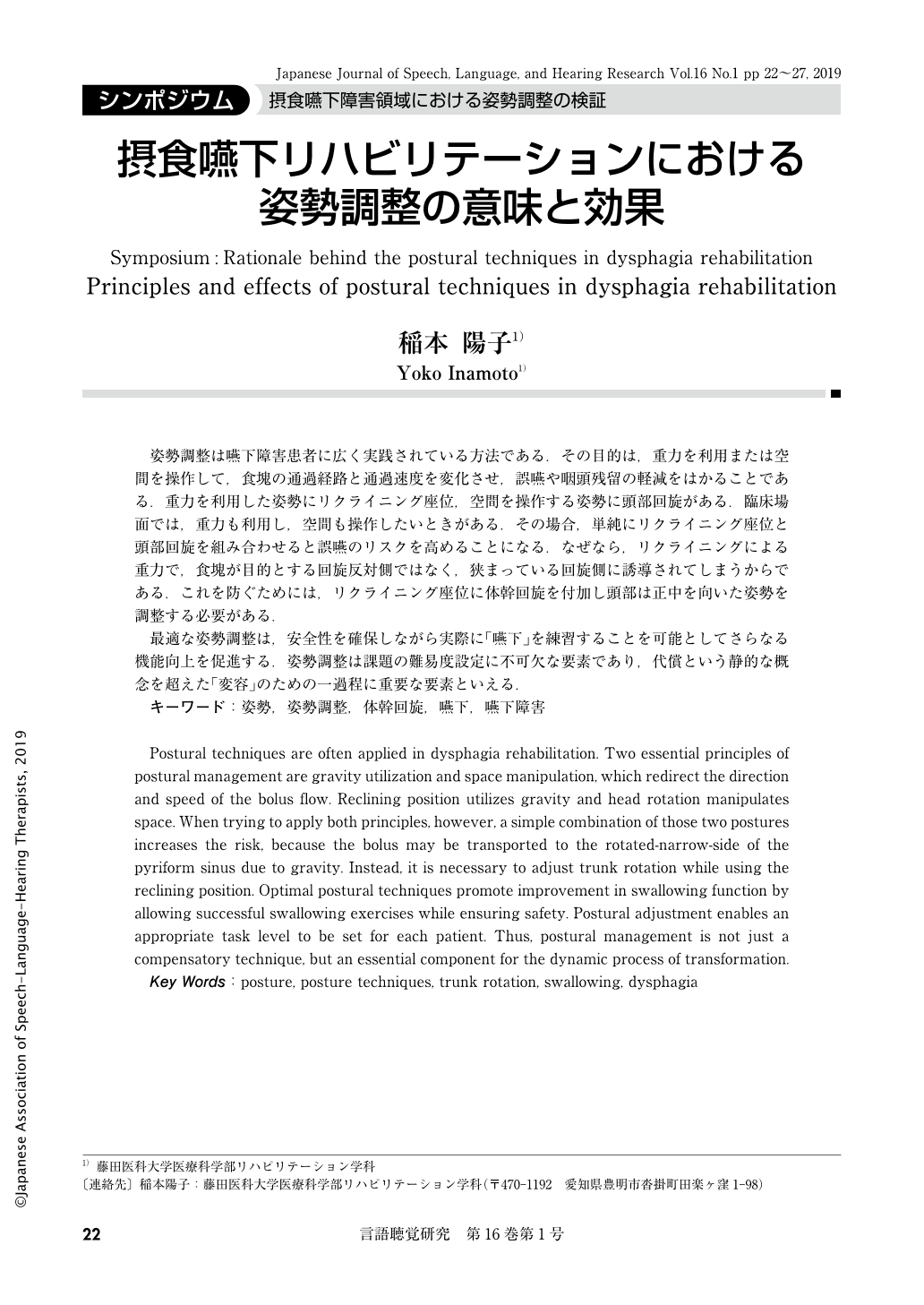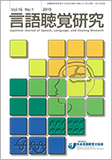Japanese
English
- 有料閲覧
- Abstract 文献概要
- 1ページ目 Look Inside
- 参考文献 Reference
姿勢調整は嚥下障害患者に広く実践されている方法である.その目的は,重力を利用または空間を操作して,食塊の通過経路と通過速度を変化させ,誤嚥や咽頭残留の軽減をはかることである.重力を利用した姿勢にリクライニング座位,空間を操作する姿勢に頭部回旋がある.臨床場面では,重力も利用し,空間も操作したいときがある.その場合,単純にリクライニング座位と頭部回旋を組み合わせると誤嚥のリスクを高めることになる.なぜなら,リクライニングによる重力で,食塊が目的とする回旋反対側ではなく,狭まっている回旋側に誘導されてしまうからである.これを防ぐためには,リクライニング座位に体幹回旋を付加し頭部は正中を向いた姿勢を調整する必要がある.
最適な姿勢調整は,安全性を確保しながら実際に「嚥下」を練習することを可能としてさらなる機能向上を促進する.姿勢調整は課題の難易度設定に不可欠な要素であり,代償という静的な概念を超えた「変容」のための一過程に重要な要素といえる.
Postural techniques are often applied in dysphagia rehabilitation. Two essential principles of postural management are gravity utilization and space manipulation, which redirect the direction and speed of the bolus flow. Reclining position utilizes gravity and head rotation manipulates space. When trying to apply both principles, however, a simple combination of those two postures increases the risk, because the bolus may be transported to the rotated-narrow-side of the pyriform sinus due to gravity. Instead, it is necessary to adjust trunk rotation while using the reclining position. Optimal postural techniques promote improvement in swallowing function by allowing successful swallowing exercises while ensuring safety. Postural adjustment enables an appropriate task level to be set for each patient. Thus, postural management is not just a compensatory technique, but an essential component for the dynamic process of transformation.

Copyright © 2019, Japanese Association of Speech-Language-Hearing Therapists. All rights reserved.


